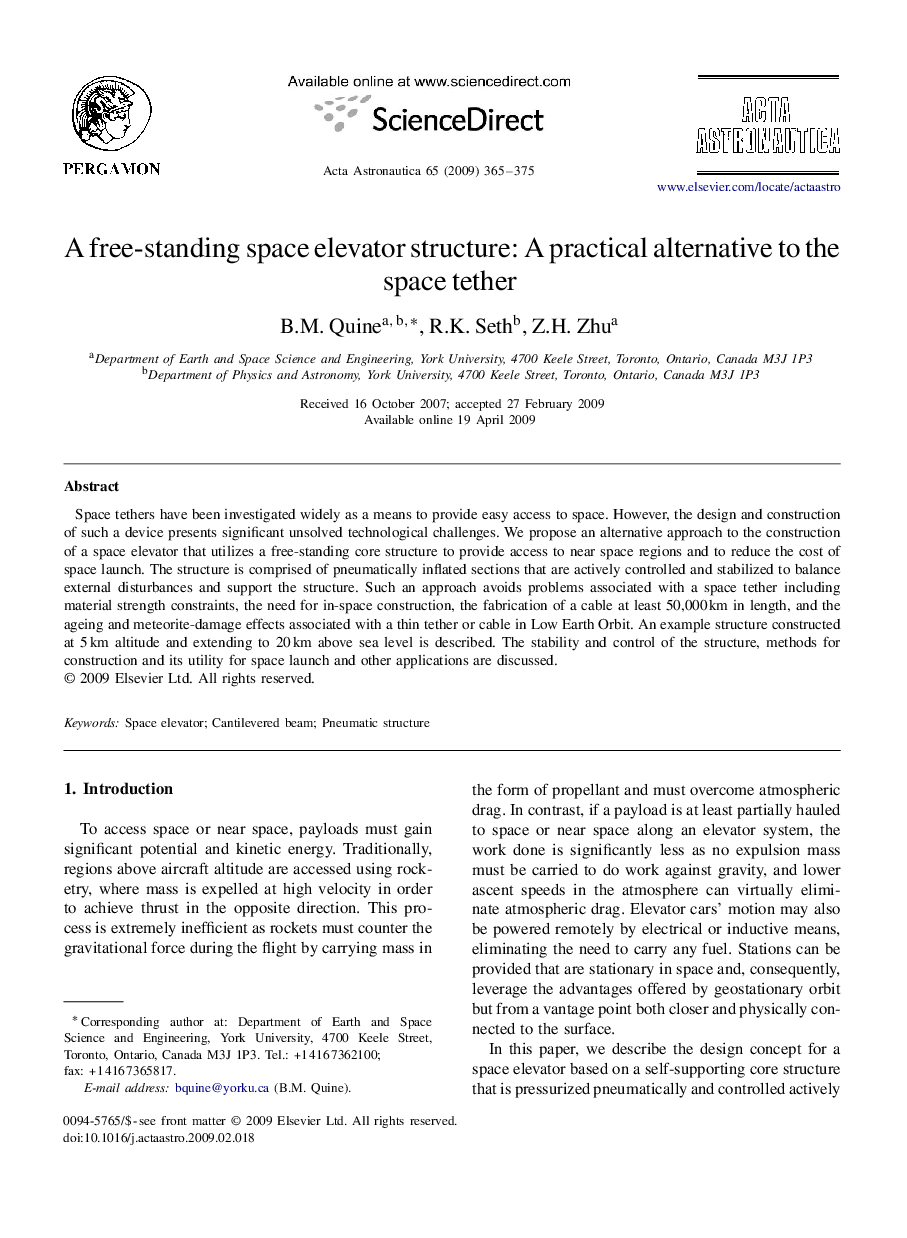| Article ID | Journal | Published Year | Pages | File Type |
|---|---|---|---|---|
| 1716627 | Acta Astronautica | 2009 | 11 Pages |
Space tethers have been investigated widely as a means to provide easy access to space. However, the design and construction of such a device presents significant unsolved technological challenges. We propose an alternative approach to the construction of a space elevator that utilizes a free-standing core structure to provide access to near space regions and to reduce the cost of space launch. The structure is comprised of pneumatically inflated sections that are actively controlled and stabilized to balance external disturbances and support the structure. Such an approach avoids problems associated with a space tether including material strength constraints, the need for in-space construction, the fabrication of a cable at least 50,000 km in length, and the ageing and meteorite-damage effects associated with a thin tether or cable in Low Earth Orbit. An example structure constructed at 5 km altitude and extending to 20 km above sea level is described. The stability and control of the structure, methods for construction and its utility for space launch and other applications are discussed.
